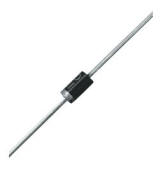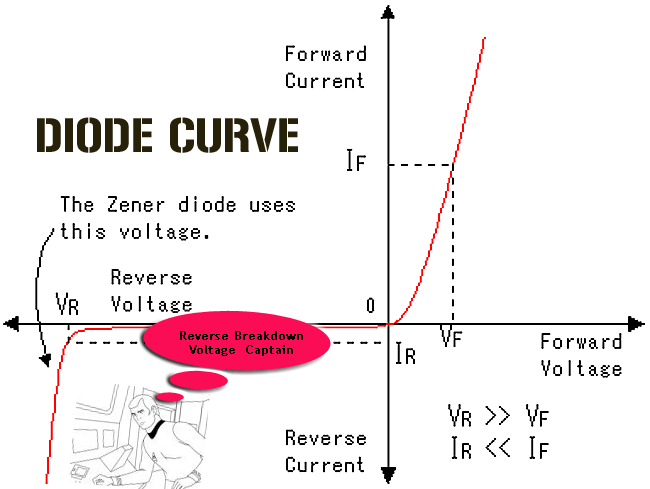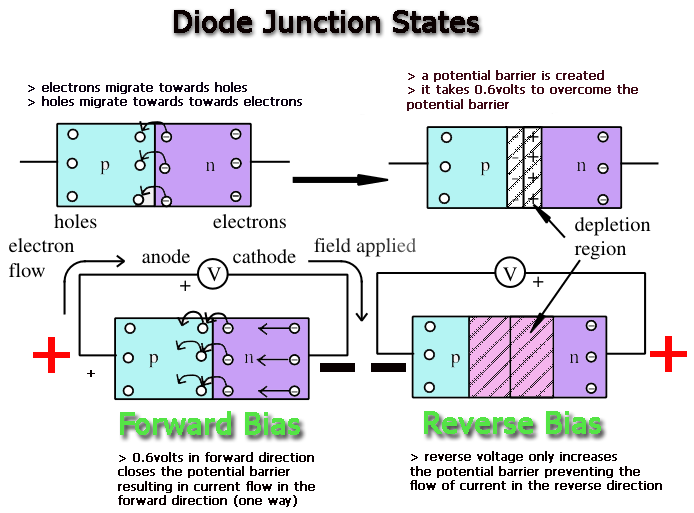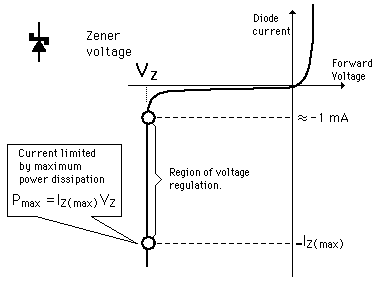 |
Diode Action |
|
 The
diode is the most common and easiest semiconductor to understand. The
diode is the most common and easiest semiconductor to understand. DIODES normally allow current to flow only in one direction. Zener diodes and solar cells are the exceptions and normally operate in reverse. Diode are used in many applications the most important and common is in circuits that change AC to DC or rectifier circuits found in power supplies and battery charges. Most of our electronic appliances have a power supply that conditions the 120VAC at the mains. The characteristic curve of a DIODE below shows the forward (positive voltage) bias and reverse (negative voltage) bias operating characteristics.
1) after 0.7 volts are applied in the forward direction current begins to flow this is called the forward voltage
3) the 1N prefix tells you it is a diode ***Overloading a diode will melt it, over voltage will damage the junction*** Characteristic Curve of a Diode
Forward and Reverse Bias Phenomena
Zener diodes - use predictable reverse breakdown voltages to regulate power supplies at the output ...... loads connected in parallel with the Zener have their voltage supply "clamped" at no higher than the reverse voltage of the Zener diode.
- a resistor must be place in series with the
Zener to limit the amount of current that flows thought the diode, and can
be calculated using the
|
||



